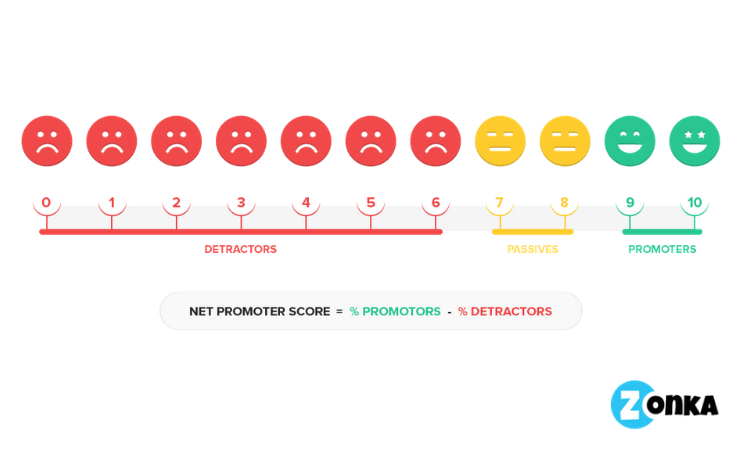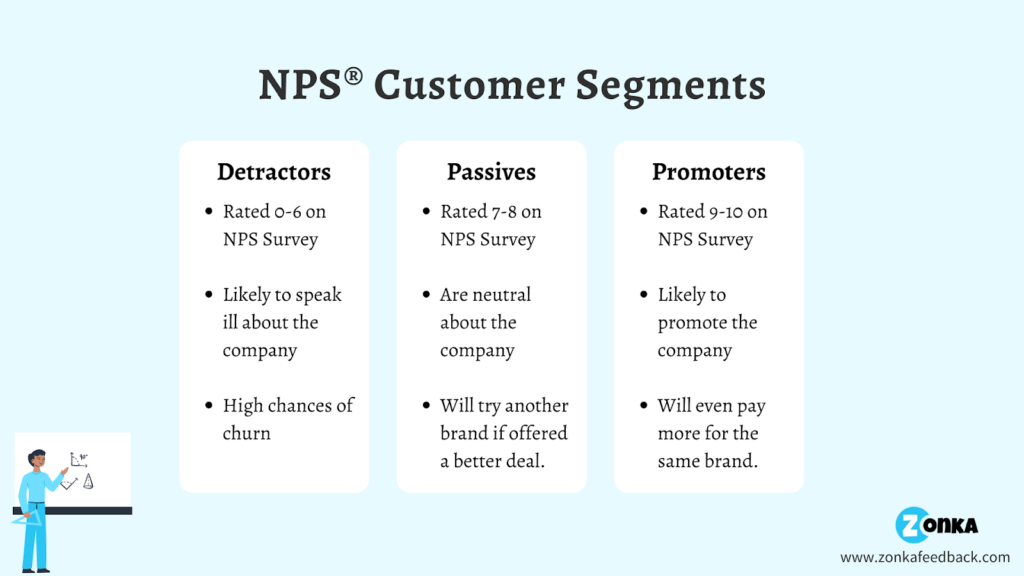The rating scale is one of the most commonly used question types that is used in online and offline surveys. Basically, a rating scale is an instrument to capture responses of the customers in quantitative form through a closed-ended question where customers can choose among the predefined answer options. In those closed-ended questions where answers are required usually for rating a brand, a product, a service, an experience, or anything, rating scale questions are used.

When we talk about NPS® Survey, a rating scale is used to ask the likeliness of the customers to recommend a brand to their family and friends. Net Promoter Score® is a widely used survey metric to gauge Customer Loyalty in quantitative terms. The following question is asked in a Net Promoter Score® survey.
“On a scale of 0 to 10, how likely would you recommend us to your friends and colleagues?”
(10 being ‘Most Likely’ and 0 being ‘Not at all Likely’)
On the basis of the response of the customers, they are divided into different categories. Here, the rating scale plays a very important role in determining the category into which the customer would fall. Customers would be either considered as promoters, detractors, or passives. Let’s learn how the customer ratings determine which category a customer should be put into.

- Promoters – The customers who give a rating either 9 or 10 on the rating scale, are considered as Promoters. It is assumed that these customers are the most loyal customers who are satisfied with the products or services of the brand and there is a high tendency of repurchase and high chances of recommendations from these customers.
- Passives – The customers who give the rating either 7 or 8 are put into the category of Passives. These customers are generally satisfied customers whose expectations were met, however, there is always a risk of churn associated with them. Whenever they get a chance, they can make a decision of trying another brand that offers a lesser price or more variety or betterment in any other aspect.
- Detractors – The customers who rate from 0 to 6 are considered detractors. They are those customers who are not satisfied with the products or services of the brand. There is a high tendency for them to switch to another brand. Moreover, they will never suggest their known ones go for that brand.
In fact, if they are asked for their opinions, they will spread bad word of mouth about the brand which can even affect the decisions of other people also who are planning to make a purchase.
Net Promoter Score Calculation is done by subtracting the percentage of detractors from that of promoters. The score lies from -100 to +100 where a positive score implies that you have more promoters than detractors whereas a negative score means that you have fewer promoters than detractors.
Now, we can see that only on the basis of the ratings on the scale, the respondents are classified into promoters, detractors, and passives. These three categories of customers should be responded in different ways to effectively Close the Feedback Loop with NPS. Promoters should be thanked and can be motivated by offering some discounts or attractive offers on their next purchase as a reward for Customer Loyalty. Passives can be asked what they feel can be improved. Their suggestions should be taken into consideration, worked upon and they should be informed about this.
For dealing with detractors, you should apologize for their bad experience, ask them their concerns, do what you can to resolve their issues, and inform them what you have done for them. In this way, you can also convert your detractors into promoters.

